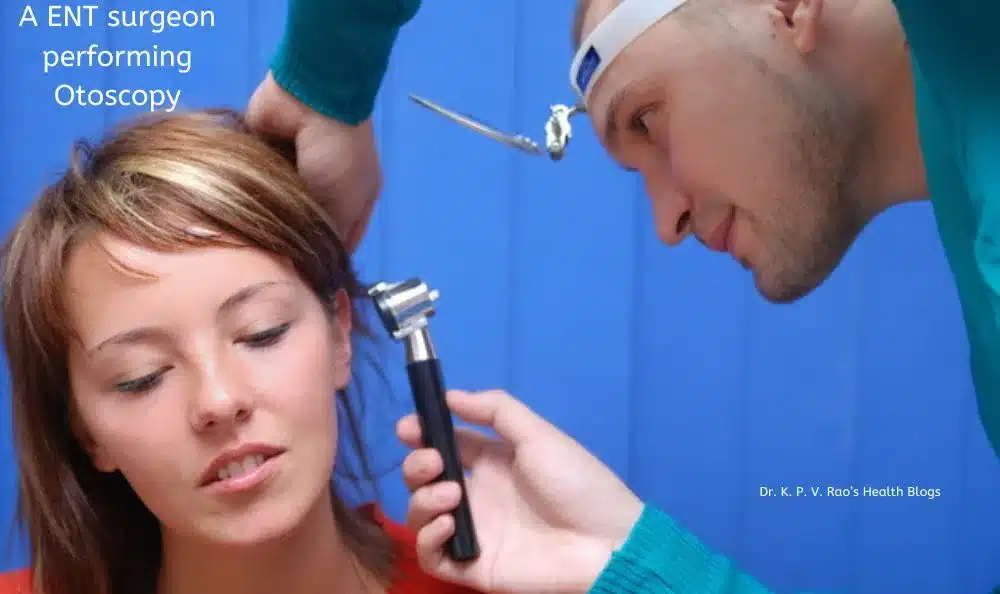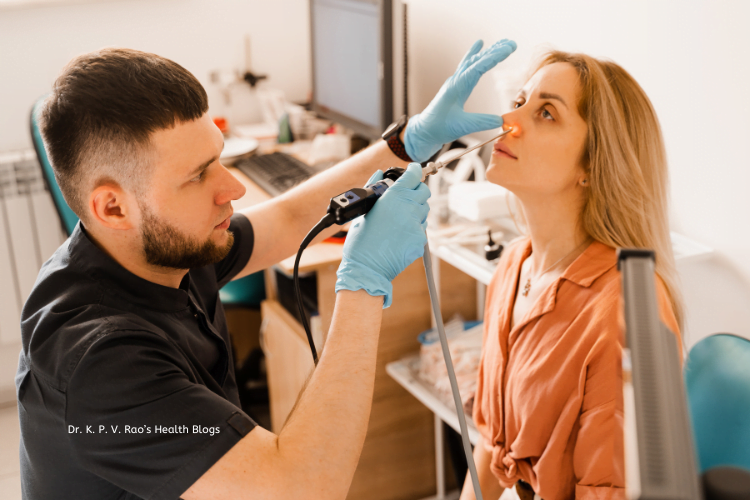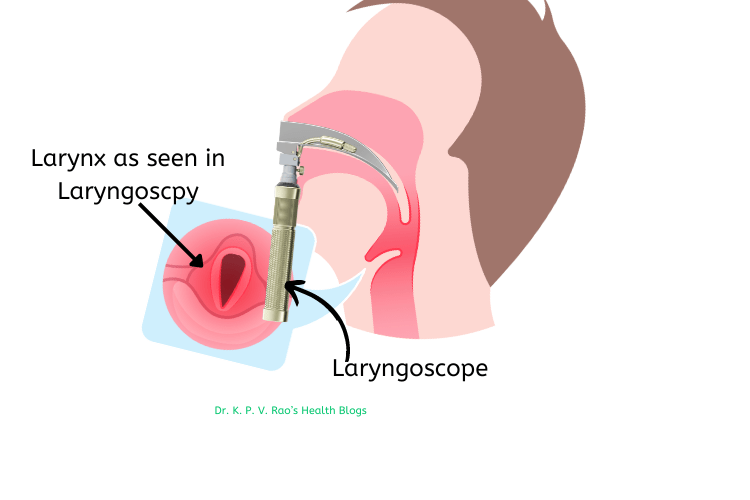Table of Contents
Introduction
In my recently concluded article, I wrote about endoscopy of the GI tract and its uses. At the end of the article, I had mentioned that I would be writing about scopes used for the respiratory tract- both upper and lower- used for disease diagnosis and treatment.
So here we are, today, in this article, we are going to learn about endoscopy of upper respiratory tract- that is, Ear, Nose, and Throat or ENT endoscopy.
What is Ear, Nose, and Throat Endoscopy?
Ear, Nose, and Throat Endoscopy, also known as ENT endoscopy, is a minimally invasive diagnostic and surgical procedure that allows physicians to examine and treat conditions affecting the ear, nose, and throat.
It involves the use of an endoscope, a thin, flexible tube with a light and camera attached to it.
The endoscope is inserted through the natural openings of the ear, nose, or throat, or through a small incision, providing a clear view of the internal structures.
The images captured by the camera are displayed on a monitor, allowing the physician to visualize the area and make accurate diagnoses or perform precise surgical interventions.
ENT endoscopy has revolutionized the field of otolaryngology by providing a less invasive alternative to traditional surgical procedures.
In the past, surgeons had to rely on open surgery to access and treat conditions in the ear, nose, and throat. This often meant larger incisions, longer recovery times, and increased risk of complications.
With the advent of endoscopy, physicians can now perform a wide range of procedures with minimal disruption to the surrounding tissues.
This not only reduces the risk of infection and scarring but also allows for faster recovery and improved patient outcomes.
What can we learn by ENT Endoscopy?
ENT endoscopy can be used to diagnose and treat a variety of conditions, including chronic sinusitis, nasal polyps, deviated septum, ear infections, vocal cord nodules, and tumors in the throat.
By providing a detailed view of the affected area, the endoscope enables physicians to accurately identify the underlying cause of symptoms and develop an appropriate treatment plan.
In addition to its diagnostic capabilities, ENT endoscopy also allows for therapeutic interventions. For example, if a patient is diagnosed with nasal polyps, the endoscope can be used to remove or shrink the polyps, relieving symptoms and improving breathing.
Similarly, if a tumor is detected in the throat, the endoscope can be used to guide the surgical removal of the tumor, minimizing damage to surrounding tissues.
The Instruments Used in ENT Endoscopy
ENT endoscopy utilizes specialized instruments designed to access and examine the intricate structures of the ear, nose, and throat. Let’s take a closer look at some of the key instruments used in this procedure:
1. Otoscope

The otoscope is a handheld instrument with a light source and a magnifying lens. It is commonly used to examine the ear canal and eardrum.
By gently inserting the otoscope into the ear, the physician can assess the health of the ear and identify any abnormalities such as infections, blockages, or structural issues.
The otoscope is an essential tool in diagnosing conditions like otitis media, tympanic membrane perforations, or earwax impaction. For more on otoscopy, you can read this article-
2. Nasal Endoscope

The nasal endoscope is a thin, flexible tube with a light and camera attached to it. It is used to visualize the nasal passages and sinuses.
By inserting the nasal endoscope through the nostril, the physician can identify nasal polyps, tumors, inflammation, or other conditions affecting the nasal cavity and sinuses.
This instrument allows for a detailed examination of the nasal anatomy, aiding in the diagnosis of conditions like chronic sinusitis, deviated septum, or nasal tumors.
3. Laryngoscope
The laryngoscope is a specialized instrument used to examine the larynx, or voice box. It consists of a handle and a long, slender tube with a light and camera at the tip.

The laryngoscope is inserted through the mouth or nose to visualize the vocal cords and surrounding structures.
It is commonly used to diagnose and treat conditions such as vocal cord nodules, polyps, or tumors.
The laryngoscope allows for a comprehensive evaluation of the larynx, aiding in the management of voice disorders, swallowing difficulties, or airway obstructions.
4. Flexible Endoscope
The flexible endoscope is a versatile instrument used for a wide range of ENT procedures. It is a long, flexible tube with a light and camera that can be maneuvered through the natural openings of the ear, nose, or throat.
The flexibility of the endoscope allows for greater accessibility and visualization of hard-to-reach areas, making it an invaluable tool in ENT diagnostics and surgeries.
With the flexible endoscope, physicians can perform procedures such as middle ear surgeries, sinus surgeries, or vocal cord surgeries with enhanced precision and minimal invasiveness.
Uses of ENT endoscopes
These instruments are just a few examples of the wide array of tools used in ENT endoscopy. Each instrument serves a specific purpose and provides valuable insights into the health and functionality of the ear, nose, and throat.
With the advancements in technology, these instruments continue to evolve, enabling ENT specialists to deliver more accurate diagnoses and effective treatments for their patients.
1. Treatment of Sleep Apnea
Another important application of ENT endoscopy is in the treatment of sleep apnea. Sleep apnea is a sleep disorder characterized by interruptions in breathing during sleep. It can lead to daytime fatigue, high blood pressure, and other serious health problems.
(I will write in detail about this condition after I am done writing about endoscopy of the respiratory tract.)
ENT endoscopy allows physicians to evaluate the upper airway and identify any obstructions or abnormalities that may be causing sleep apnea.
They can then perform procedures such as uvulopalatopharyngoplasty (UPPP) or tongue base reduction to remove or reposition the obstructive tissues and improve airflow during sleep.
2. Diagnosis and Treatment of Head and Neck Cancer
ENT endoscopy is an invaluable tool in the diagnosis and treatment of head and neck cancer. By visualizing the throat, larynx, and other structures, physicians can detect early signs of cancerous growths or tumors.
They can then perform biopsies to confirm the diagnosis and determine the appropriate course of treatment.
ENT endoscopy also allows for minimally invasive surgical interventions, such as transoral robotic surgery (TORS), which can remove tumors without the need for external incisions.
3. Evaluation and Treatment of Swallowing Disorders
Swallowing disorders, also known as dysphagia, can significantly impact a person’s quality of life.
ENT endoscopy is used to evaluate the swallowing mechanism and identify any abnormalities or obstructions that may be causing difficulty in swallowing. This procedure is also called Fiberoptic Endoscopic Evaluation of Swallowing (FEES) test.
By visualizing the throat and esophagus, physicians can determine the underlying cause of the swallowing disorder and develop a personalized treatment plan.
This may include lifestyle modifications, swallowing exercises, or surgical interventions such as dilation or removal of obstructions.
4. Management of Allergic Rhinitis
Allergic rhinitis, commonly known as hay fever, is a condition characterized by inflammation of the nasal passages due to an allergic reaction.
ENT endoscopy is used to evaluate the nasal mucosa and identify any signs of inflammation or allergic response. This allows physicians to develop a comprehensive treatment plan, which may include allergen avoidance, medications, or immunotherapy.
By addressing the underlying cause of allergic rhinitis, ENT endoscopy helps overcome and treat symptoms and improve the patient’s quality of life.
Conclusion
Overall, ENT endoscopy is a valuable tool in the field of otolaryngology, offering patients a less invasive and more effective approach to diagnosing and treating conditions affecting the ear, nose, and throat.
As technology continues to advance, endoscopes are becoming smaller, more flexible, and capable of capturing higher resolution images, further enhancing the capabilities of this procedure.
Further Reading on Ear, Nose, and Throat Endoscopy
If you’re interested in delving deeper into the world of ear, nose, and throat endoscopy, we recommend the following articles:
- Minimally Invasive Approaches in Sinus and Nasal Surgery – Read Article
- Endoscopic Management of Vocal Cord Disorders – Read Article
Final Words
I hope you have found this article useful. Now you know what to expect when your doctor or ENT surgeon tells you to undergo an endoscopy test.
I request all my readers to share this article with your near and dear ones- it may help someone who wants to know about the use of endoscopes.
Alternately, you can share it here-
ENT Endoscopy: A Comprehensive Guide Share on XMy next article will be on endoscopy of organs in the chest, namely Bronchoscopy and Thoracoscopy. Till then-
Adios.

